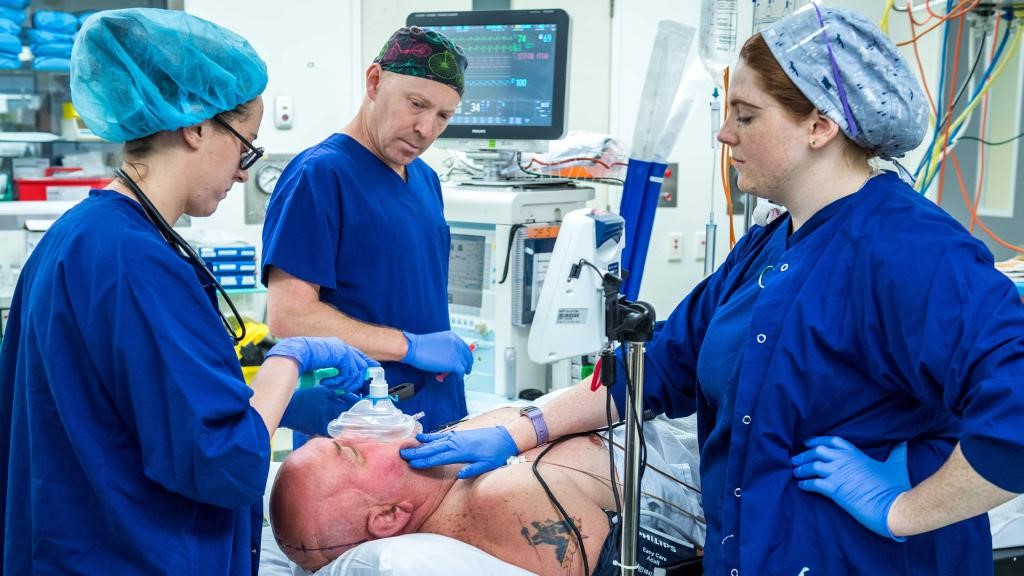‘FitBit for the brain’ helping Aussies with epilepsy
A Melbourne-designed device dubbed a “fitbit for the brain” is giving hope to thousands of Australians with epilepsy who suffer seizures with little warning. Here’s how it works.
The first two Victorian patients have had a “fitbit for the brain” implanted in a world-first trial of a device that aims to warn of impending epileptic seizures.
The Melbourne-designed device gives patients a “weather forecast” by tracking their brain activity and alerting them that they may soon suffer a seizure.
It is hoped the device could help those who suffer seizures with little warning, with medication and surgery failing to help a third of the 250,000 Australians with epilepsy.
Carrum Downs grandfather Rob Bechaz, 60, became the first patient to have the device implanted by St Vincent’s neurosurgeon Michael Murphy late last year.
He was diagnosed with epilepsy at age 18, and had surgery five years ago to remove part of his brain’s frontal lobe that housed his seizure hot spot.
But despite this and the daily medication he takes, Mr Bechaz still suffers about a dozen absence seizures a month, where he briefly loses awareness.
“Hopefully this leads to better treatments for people,” he said.
“That’s why I’m doing it. At my age, I just want to make my quality of life – of what I’ve got left – better.
“My family has put up with enough. If I can find an answer for this, we can get on with our lives and stop worrying about it.”


One hundred engineers, neuroscientists and neurologists from St Vincent’s Hospital, the Bionics Institute and University of Melbourne worked for more than four years to make their bold plan a reality.
They teamed with medical device company Cochlear to create the start-up company Epi-Minder to oversee the manufacturing of the device and the trial.
St Vincent’s Hospital director of neurology, Professor Mark Cook came up with the idea 16 years after working with the inventor of the Cochlear implant, Professor Graeme Clark.
“We’re finally able to put back control in the hands of the patients,” Prof Cook said.
“It’s taken a long time, but patients can straight away see how they can use this in their day-to-day life, how it will improve their quality of life, and how it will make them safer.”
Taking inspiration from the Cochlear implant, a string of electrodes implanted under the scalp records the brain’s electrical activity.
An external computer analyses the data for unique brain activity patterns that precede a seizure, and sends an alert to the patient’s phone just like a fitbit.
More patients will be implanted with the device this month, with a further dozen expected to be using the system over the next few months.
“What we want to achieve for them in this trial is to show we can accurately record their seizures, this happens automatically, and this works towards giving them the sort of security and control they need in the long term,” Prof Cook said.
“We want to use this to be able to figure out what treatments are doing, and in the long run help them predict when seizures are going to happen.”
This trial was supported by The Acceleration Fund of the Department of Health and Human Services.

Article by Brigid O’Connell, EXCLUSIVE, Herald Sun
Image Credits
Rob Bechaz became the first patient to have the device implanted. Picture: Jake Nowakowski
Neurosurgeon Michael Murphy prepares to insert the device. Picture: Jake Nowakowski
Rob with his wife Debbie Bechaz post surgery. Picture: Josie Hayden








